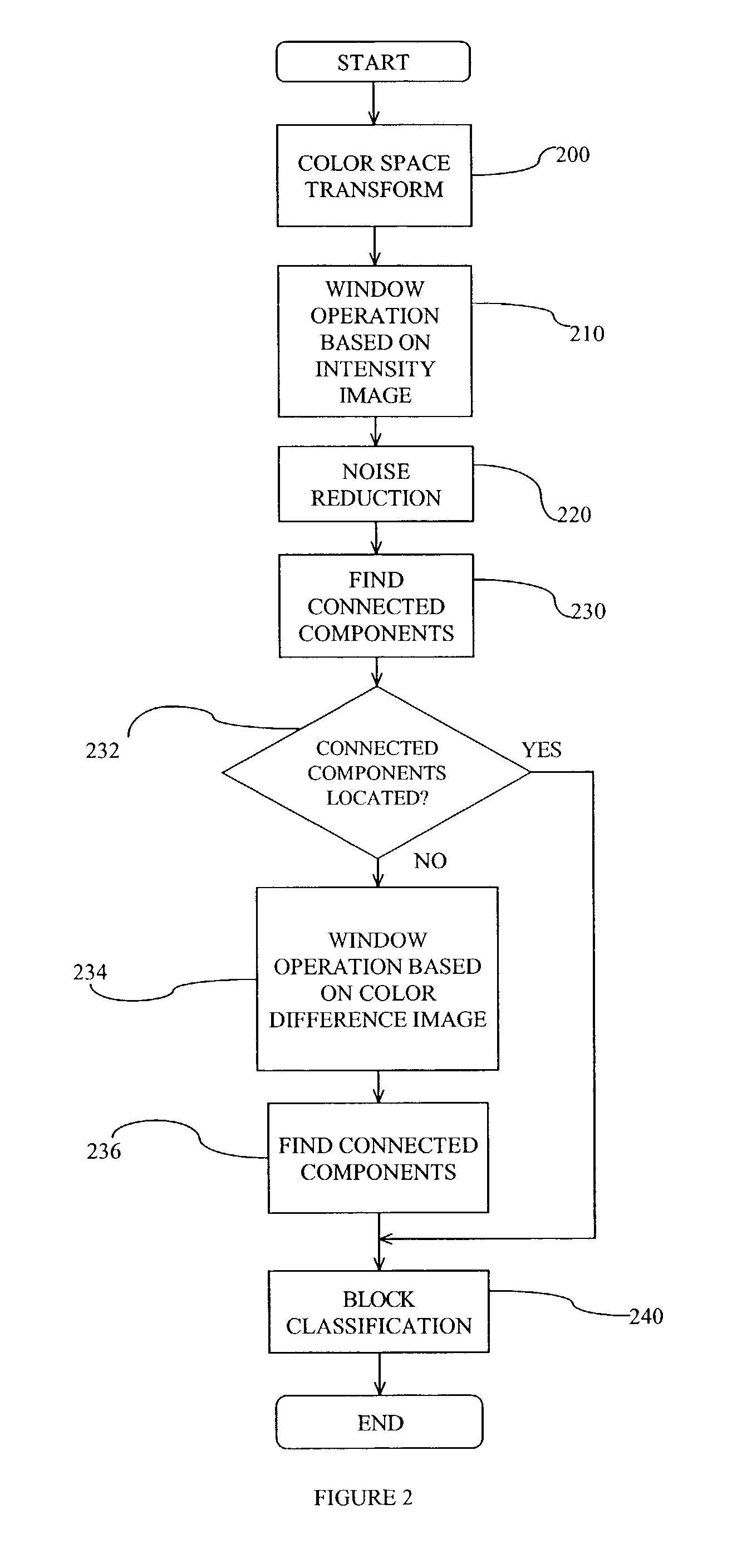Method of texture-based color document segmentation
a color document and texture technology, applied in the field of texture-based color document segmentation, can solve the problems of inability to save and retrieve information, inability to connect components, and time-consuming methods, so as to clean up any noise generated
- Summary
- Abstract
- Description
- Claims
- Application Information
AI Technical Summary
Benefits of technology
Problems solved by technology
Method used
Image
Examples
Embodiment Construction
[0025]The present invention is a method of segmenting color documents based upon the less time consuming top-down approach. The method of the present invention is based on the fact that the texture of text and halftone regions are generally distinguishable. A text region has horizontal or vertical elements than a halftone region which generally has no pattern. In other words, text regions have a more homogeneous image texture than halftone regions in a document. The method of the present invention employs two alternative methods to capture the orientation and frequency feature of the texture of regions within a document.
[0026]Referring now to the drawings, and in particular to the flowchart of FIG. 1, the preferred method of color document segmentation of the present invention takes into account both color and texture as the statistical properties. The RGB (red, green, and blue) color space is first preferably transformed into an HSV (hue, saturation, and intensity value) color spac...
PUM
 Login to View More
Login to View More Abstract
Description
Claims
Application Information
 Login to View More
Login to View More - R&D
- Intellectual Property
- Life Sciences
- Materials
- Tech Scout
- Unparalleled Data Quality
- Higher Quality Content
- 60% Fewer Hallucinations
Browse by: Latest US Patents, China's latest patents, Technical Efficacy Thesaurus, Application Domain, Technology Topic, Popular Technical Reports.
© 2025 PatSnap. All rights reserved.Legal|Privacy policy|Modern Slavery Act Transparency Statement|Sitemap|About US| Contact US: help@patsnap.com



